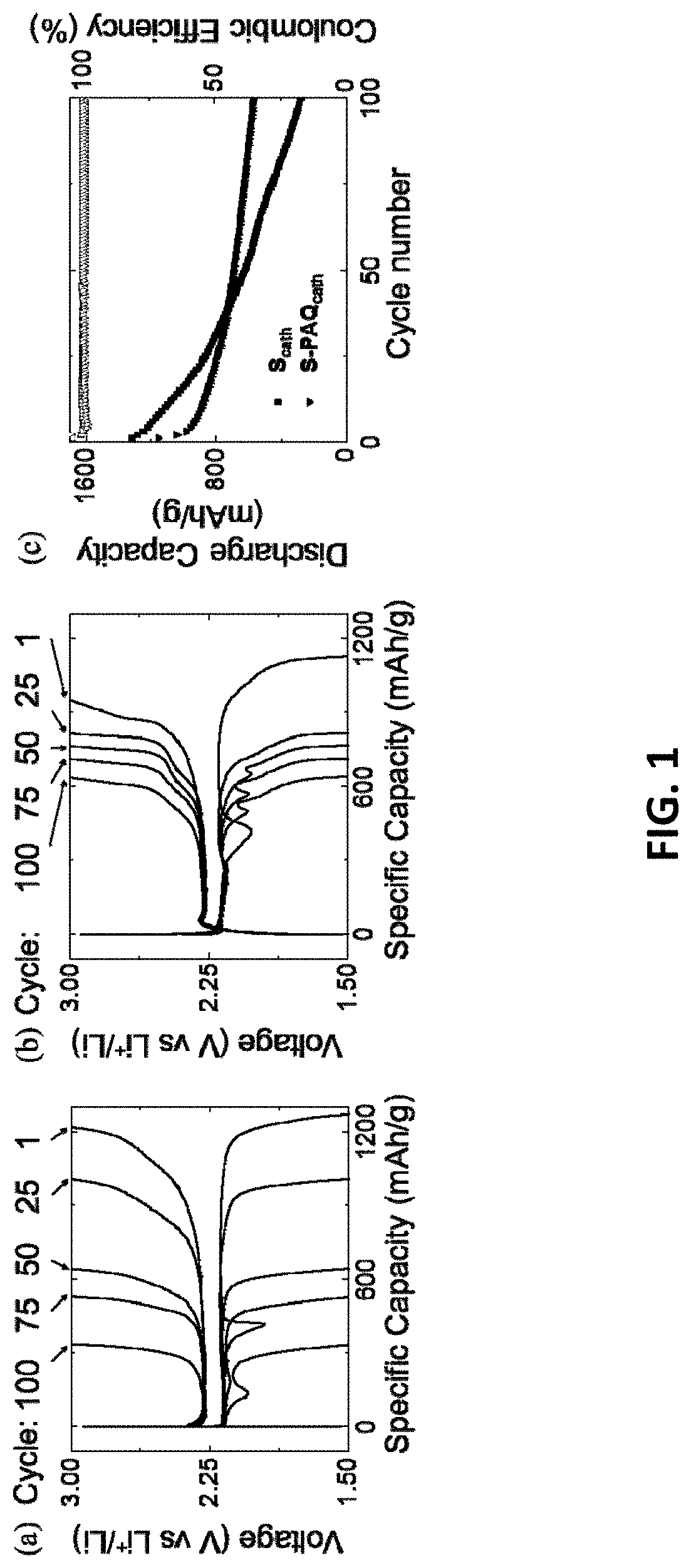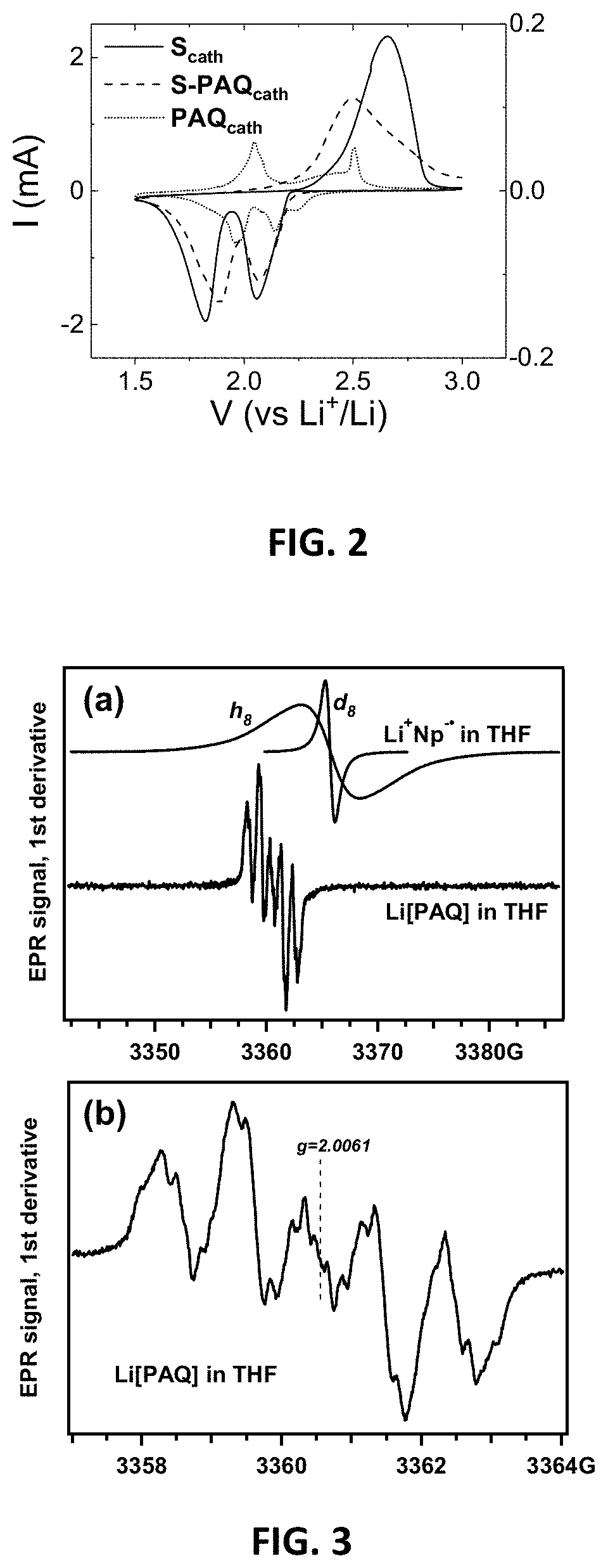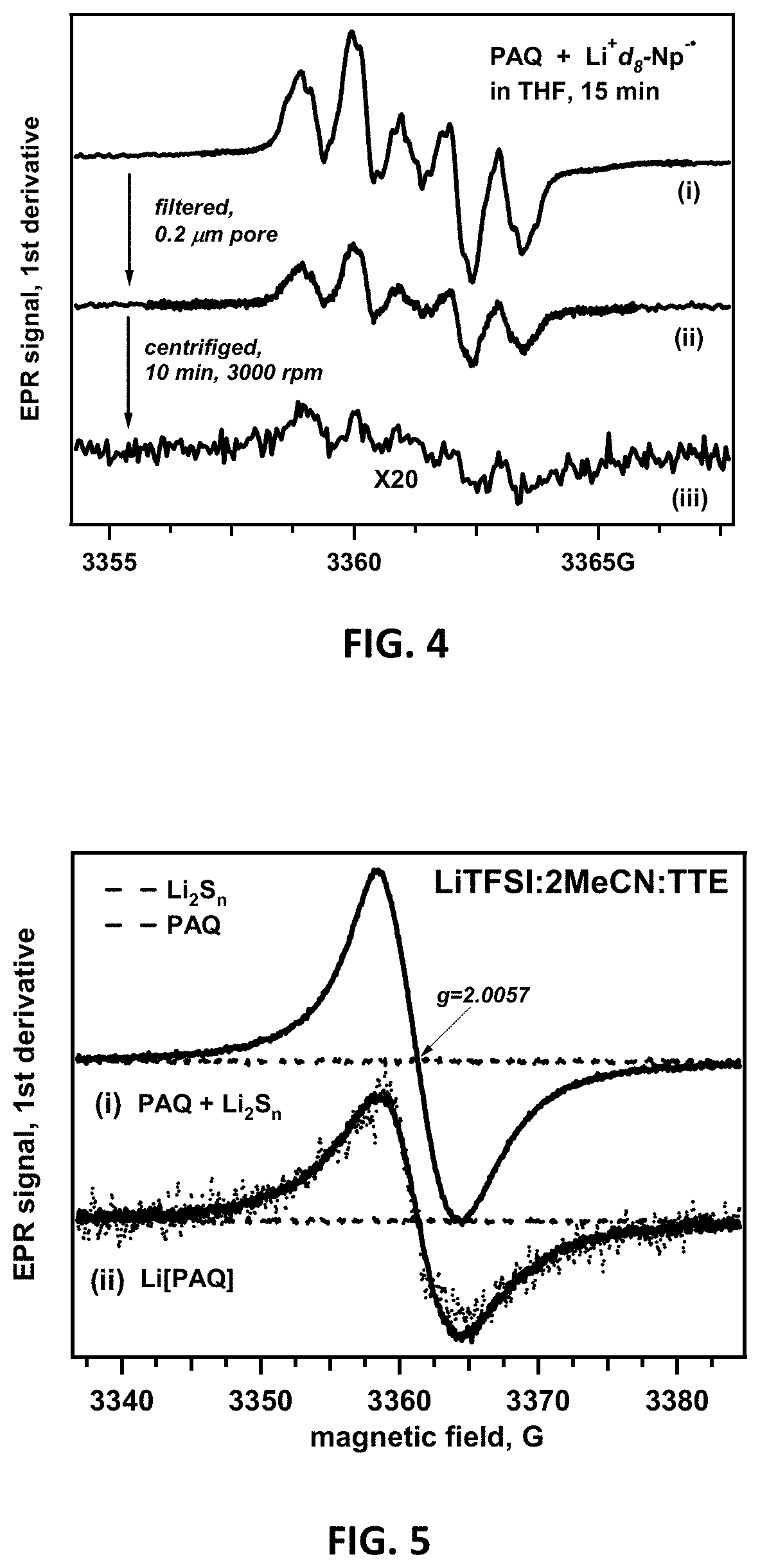Lithium-sulfur battery with polyanthraquinone binder
a technology of polyanthraquinone and lithium-sulfur batteries, which is applied in the field of lithium-sulfur batteries and cathodes there, can solve the problems of little known or proven about the possibility of using them as binders, and achieve the effect of preventing polysulfide shuttling and improving capacity retention
- Summary
- Abstract
- Description
- Claims
- Application Information
AI Technical Summary
Benefits of technology
Problems solved by technology
Method used
Image
Examples
examples
Ex. 1. Materials Preparation
[0049]A number of chemicals used herein were purchased from Sigma-Aldrich, and used as received, for example: 2,6-dibromoanthraquinone, bis(pinacolato)diboron, 1,1′-bis(diphenylphosphino)ferrocene]di-chloropalladium(II) ((DPPF)PdCl2), K2CO3, anhydrous toluene, CH2Cl2, CHCl3, CH3OH, 2,3-dichloro-5,6-dicyano-1,4-benzoquinone (DDQ), THF, sulfur (100 mesh) and anhydrous N-methyl-2-pyrrolidone (NMP). Acetonitrile (CH3CN) and 1,2-dimethoxyethane (DME) were purchased from Sigma-Aldrich and dried over 3 Å molecular sieves before use. Conductive carbon C45 nanoparticles (60-70 nm) were purchased from Timcal. Lithium bis(trifluoromethane)sulfonamide (LiTFSI) was purchased from Solvionic and dried at 150° C. under vacuum overnight prior to use. Polyvinylidene difluoride (PVdF) was purchased from Solvay. 1,1,2,2-tetrafluoroethyl 2,2,3,3-tetrafluoropropyl ether (TTE) was purchased from SynQuest and dried over 3 Å molecular sieves overnight before use.
A. Synthesis of 2...
PUM
| Property | Measurement | Unit |
|---|---|---|
| molecular weight | aaaaa | aaaaa |
| polydispersity index | aaaaa | aaaaa |
| polydispersity index | aaaaa | aaaaa |
Abstract
Description
Claims
Application Information
 Login to View More
Login to View More - R&D
- Intellectual Property
- Life Sciences
- Materials
- Tech Scout
- Unparalleled Data Quality
- Higher Quality Content
- 60% Fewer Hallucinations
Browse by: Latest US Patents, China's latest patents, Technical Efficacy Thesaurus, Application Domain, Technology Topic, Popular Technical Reports.
© 2025 PatSnap. All rights reserved.Legal|Privacy policy|Modern Slavery Act Transparency Statement|Sitemap|About US| Contact US: help@patsnap.com



